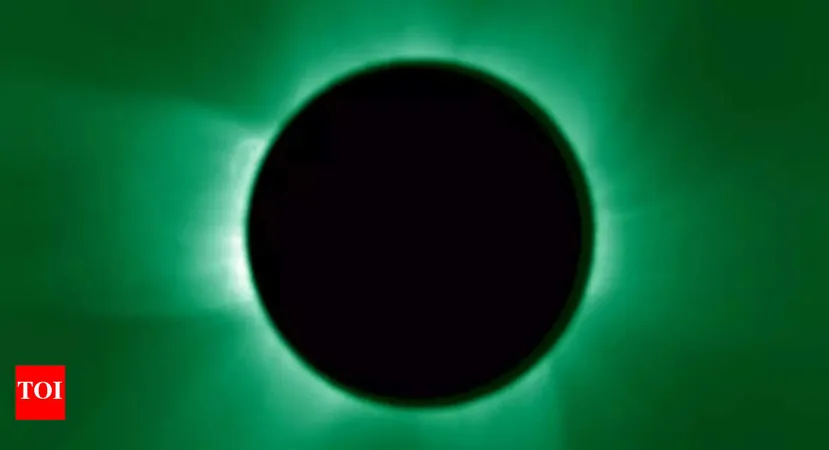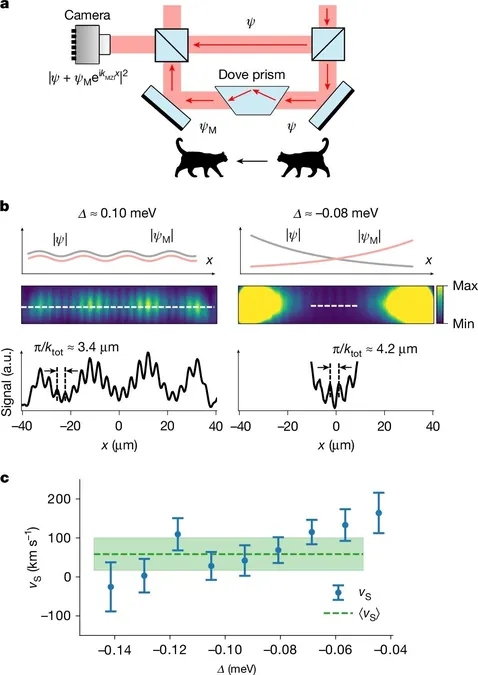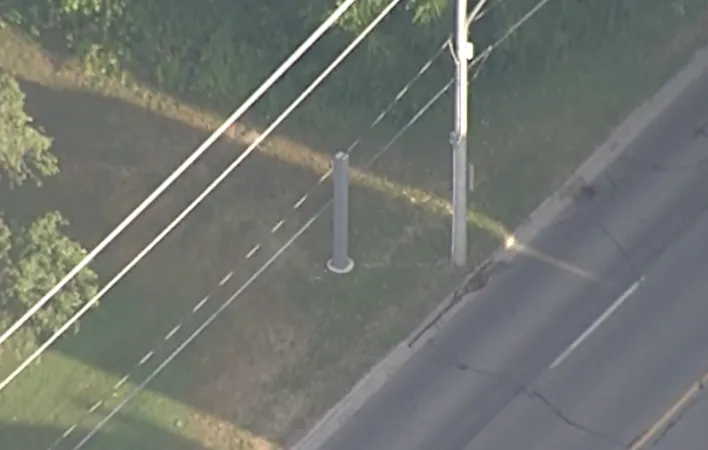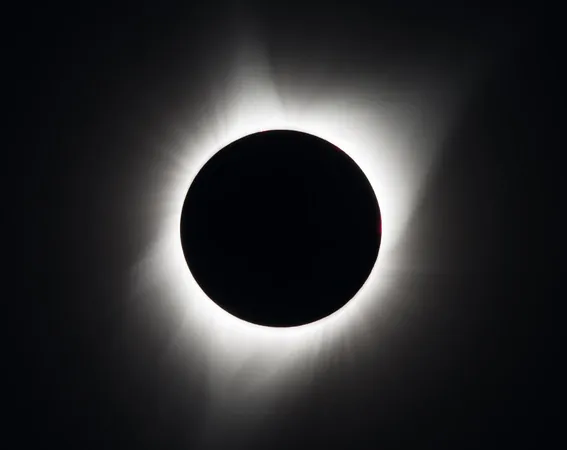
Witness the Magic: ESA Unveils Breathtaking Images from First-Ever Artificial Solar Eclipse in Space!
2025-06-17
Author: Charlotte
Groundbreaking Achievement by ESA's Proba-3 Mission
In an extraordinary leap for solar exploration, the European Space Agency (ESA) has unveiled mesmerizing images of the Sun's corona—its faint outer atmosphere—the result of the world’s first artificial solar eclipse, meticulously orchestrated by two satellites, Proba-3.
Innovative Technique: The Birth of an Artificial Eclipse
Proba-3’s mission marks a monumental milestone in space observation. Two satellites—one acting as an Occulter and the other as a Coronagraph—flew in flawless formation to create a simulated eclipse, with one satellite blocking the Sun's blinding light to allow the other to capture unseen details of the solar corona. This revolutionary method promises to supersede the constraints faced by ground-based telescopes and natural eclipses, offering fabulous insights into solar phenomena that can significantly affect Earth.
Precision Engineering: Satellites Synchronize Like Clockwork
The two spacecraft maintained an astonishing distance of just 150 meters apart, ensuring pinpoint alignment with millimeter precision for hours, all without human intervention. This feat of engineering is made possible through advanced onboard navigation systems, allowing the Occulter to create a crisp shadow for the Coronagraph, enabling it to study the solar corona intimately. The images collected boast clarity that illuminates the Sun's outer atmosphere like never before.
Unlocking Solar Mysteries: Insights on Solar Storms Ahead
Understanding the corona is pivotal to monitoring solar winds and coronal mass ejections (CMEs)—powerful solar blasts capable of wreaking havoc on Earth's technology and infrastructure. Preliminary images from ASPIICS, the Coronagraph, suggest breakthroughs in our understanding of these solar activities. ESA's Director of Technology highlighted that many innovations employed in Proba-3 emerged from ESA's General Support Technology Programme, showcasing the mission as the pinnacle of precision formation flying.
The Enigma of the Corona: Why Is It Hotter Than the Sun?
One of the solar system’s biggest puzzles—why the corona is millions of degrees hotter than the Sun’s surface—will be investigated using data from ASPIICS. Project scientist Joe Zender emphasizes that, by combining ASPIICS findings with readings from advanced instruments, they aim to unravel some of solar science's age-old mysteries.
Proba-3's First Success: An Eclipse on the First Attempt!
Excitement filled the air as the Proba-3 team celebrated the successful capture of its initial eclipse on the very first try. With plans to extend observation up to six hours per orbit, this technology will enable constant solar monitoring—an astonishing upgrade from natural eclipses that occur infrequently. Mission manager Damien Galano notes the record-breaking precision achieved even while the mission is still in its commissioning phase.
Transforming Solar Research with High-Resolution Imaging
Proba-3 is set to redefine how scientists model solar behavior, providing unprecedented high-resolution images that will enhance predictions of solar weather abnormalities. ESA's Space Weather Modelling Coordinator describes these observations as beyond the scope of today’s coronagraphs, offering a treasure trove of data for preparing Earth against solar threats.
Meet Proba-3: The Collaborative Engine of Innovation
Spearheaded by ESA and built by an impressive consortium of over 29 companies across 14 countries, Proba-3 represents a global collaborative effort, prominently featuring firms like Sener (Spain) and Airbus Defence and Space. Launched on December 5, 2024, from India, this mission is set to make waves in our comprehension of solar dynamics, offering humanity a clearer window into the mysteries of our star.
Stay Tuned!
As the Proba-3 mission continues to evolve, it promises to usher in a new era of solar exploration, revealing secrets of the Sun that could fundamentally change our understanding of space weather and its influence on Earth.









 Brasil (PT)
Brasil (PT)
 Canada (EN)
Canada (EN)
 Chile (ES)
Chile (ES)
 Česko (CS)
Česko (CS)
 대한민국 (KO)
대한민국 (KO)
 España (ES)
España (ES)
 France (FR)
France (FR)
 Hong Kong (EN)
Hong Kong (EN)
 Italia (IT)
Italia (IT)
 日本 (JA)
日本 (JA)
 Magyarország (HU)
Magyarország (HU)
 Norge (NO)
Norge (NO)
 Polska (PL)
Polska (PL)
 Schweiz (DE)
Schweiz (DE)
 Singapore (EN)
Singapore (EN)
 Sverige (SV)
Sverige (SV)
 Suomi (FI)
Suomi (FI)
 Türkiye (TR)
Türkiye (TR)
 الإمارات العربية المتحدة (AR)
الإمارات العربية المتحدة (AR)